Kalami Wine
In 2000 our beloved caretaker of Kalami, Telemachos, had a stroke and was unable to take care for the property any longer. But he did find us a replacement: Yiorgos Hadzipanayiotis.
Yiorgos is not a farmer by profession but a well paid plumber. He grew up, however, in an agricultural family and farming is his source of relaxation and almost a hobby. His house is on the hill overlooking our own property. For several years he had been admiring our vineyard and had repeatedly told Telemachos that when he retires, he, Yiorgos, would love to take care of our land. The first time I met him he told me that he would love to make wine from our vines, we agreed, and he is now our caretaker.
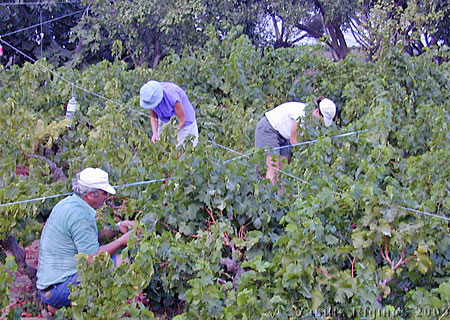
Kalami August 2001
In 2001 we started making wine using the grapes from our existing vines (primarily the red table grape called kardinal and moschata, the famous Samian sweet white grapes). Under Yiorgosʼ direction, after we harvested the grapes we crushed and then pressed them using equipment that Yiorgos had owned. We then put the must (grape juice) into a 100 liter French oak barrel which we purchased for this occasion. We used no chemical preservatives nor did we introduce any yeast other then what was naturally on the grapes.
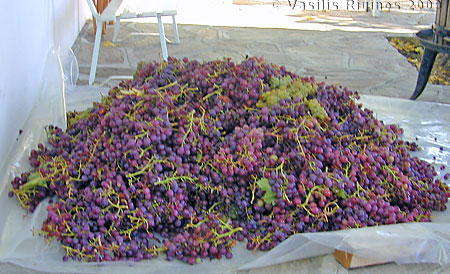
Kalami August 2001
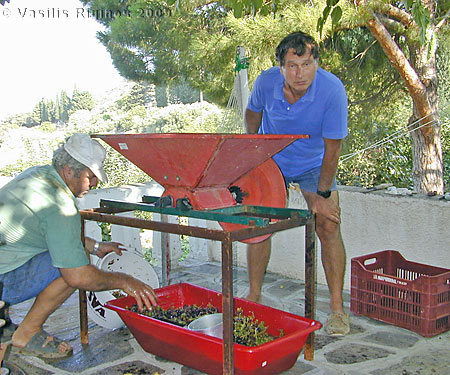
Kalami August 2001
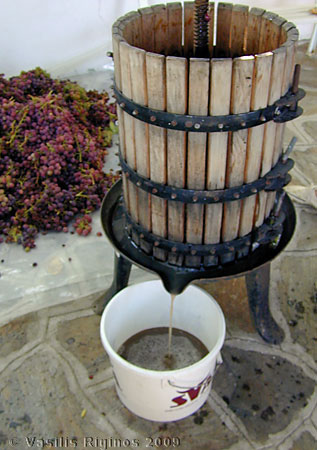
Kalami August 2001
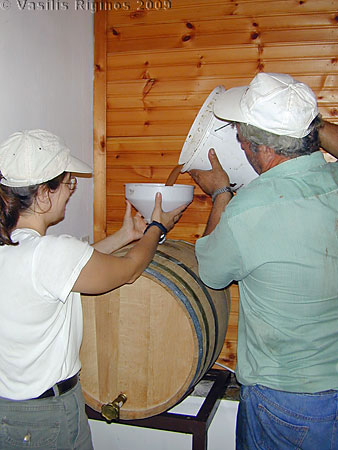
Kalami August 2001

In the Spring of 2002 we eagerly tasted the product. Not surprisingly it was an off-color rosé wine but it was hardly drinkable. At that time we decided to upgrade our vines. So, in the winter of 2003 Yiorgos uprooted the vines on the terrace above the house and planted 3 French varieties: Cabernet Sauvignon, Merlot, and Syrah. Contrary to traditional practice in Samos where the vines crawl on the ground, he built supports with wire guides so that the vines can can spread above ground.
In 2003 we had a disastrous year. Conditions conspired to dry out the grapes, leaving only a hollow skin. None of our grapes were usable. In 2004 quite the opposite—we had a good crop and the new vines even began to bear some fruit. The crop in 2005 was small but of good quality. Under the advice of Scott Shomer, our son-in-law, we began paying particular attention to the problem of oxidation. We used a trap on the barrel allowing CO2 to escape while preventing air from entering.
The vintage 2005 wine was improved and had a better color, still rosé. We continued the anti-oxidation measures during the 2006 wine-making. Also, in 2005 we began bottling the wine that was in the barrel when it was time to empty it for the new must. For this we bought a special hand-operated bottling machine.
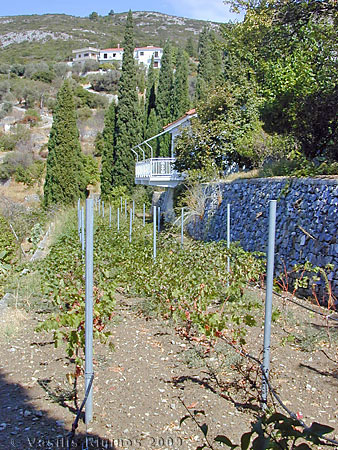
Summer 2006
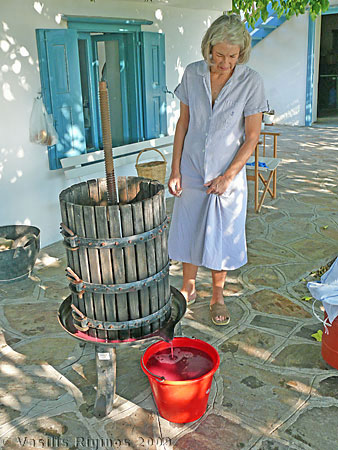
August 2007
In 2007 two major changes in our wine-making occurred. First, after studying several books on wine-making, we changed our technique so as to make red wine instead of rosé. After crushing the grapes we put them into a plastic container and allowed them to ferment for a week. We then pressed them and transfered the must into the barrel. The second change came about because we had our first crop from our new vines on the upper terrace. So these new dark red grapes accounted for about 30% of our must. Also in the winter of 2007 Yiorgos uprooted some of the old vines in the lower terrace and replaced them with the same 3 French varieties as in the upper terrace, that is Cabernet Sauvignon, Merlot, and Syrah.
When I arrived in Samos in the Spring of 2008 I was surprised by how much our wine had improved. It was a nice dark red color and quite drinkable. As an experiment, I bottled about 5-6 bottles. By harvest time, the wine bottled earlier in the spring was better than the one from the barrel. The theory is that, since we had been drawing wine from the barrel, surface area increased and there was some oxidation. For family reasons we were not present during the 2008 harvest and Yiorgos did all the work. The harvest from the lower terrace was meager and all the 2008 must came from the new upper terrace vines.
The wine we tasted in the Spring of 2009 was respectable, although with a fairly strong tannin taste. Not wanting to take a chance, I bottled all of the 2008 vintage in the May 2009. Also, our friend Dimitris Vourliotis who has a printing shop in Athens made us labels which I attached to our bottles. Not sure if they improved the taste but they do look good. Before our 2009 harvest we invested in a new wine-press and a new crusher/stem-separator machine. This machine removes the stems automatically and we hope this will lower the tannin in our wine. We also bought a 150 liter stainless-steel vat to replace the plastic ones for the primary fermentation. Our 2009 must consists of 80% grapes from the upper terrace and 20% old Samian muscat grapes from our lower terrace.
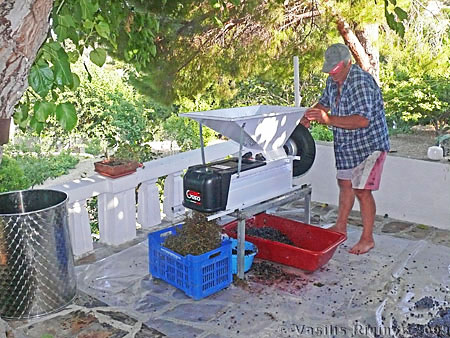
Crusher/Stem Separator, August 28 2009
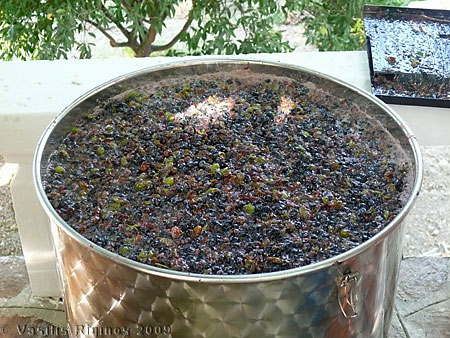
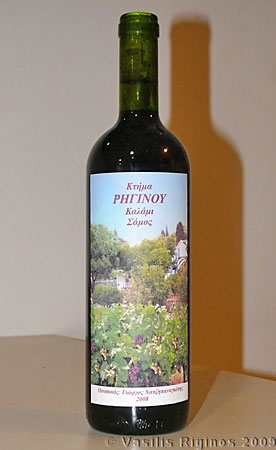
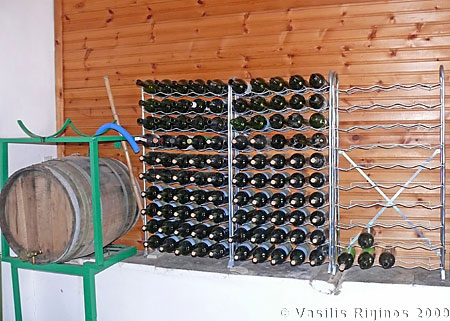
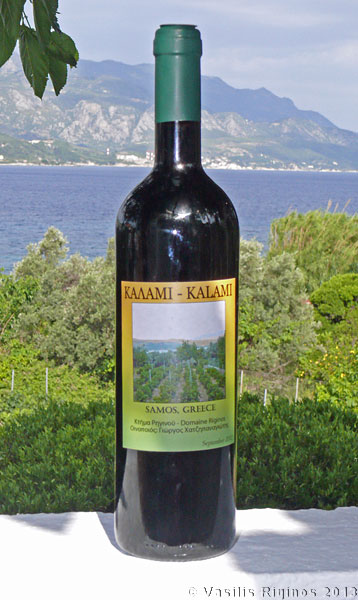
|
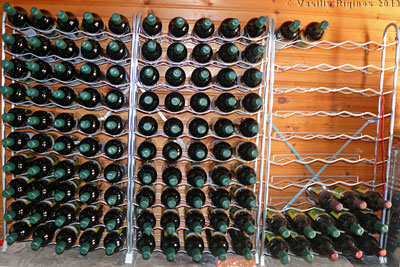
|
In 2019 we made new labels from the design made by Cynthia’s classmate and friend since the first grade Fiona Passantino who is an artist residing in the Netherlands.
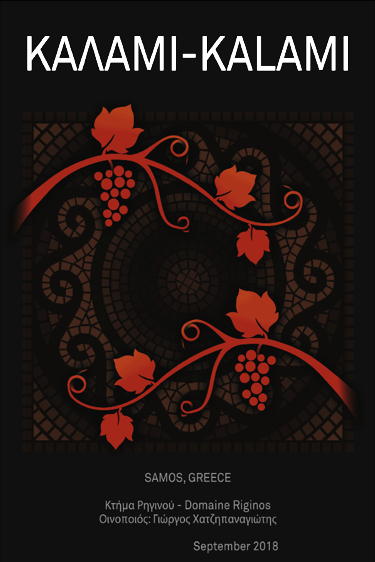
 Front
Front
|
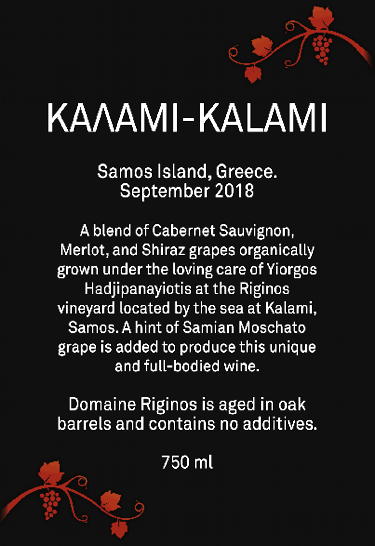 Back
Back
|
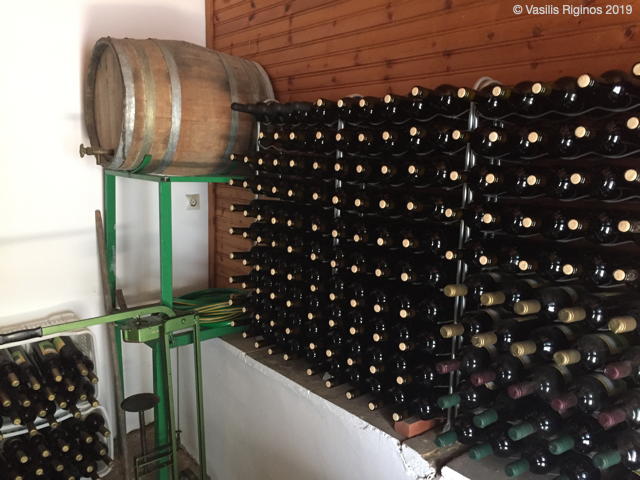
In 2019 and in 2020 we had disastrous years. A hot summer with rains conspired to dry out the grapes, leaving only a hollow skin. None of our grapes were usable.